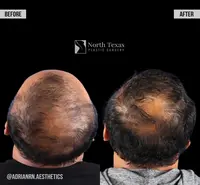Posted: January 27, 2017
Facial exfoliations—or chemical peels—are very popular because of their ability to reveal brighter, fresher skin. They stimulate cellular turnover, giving you a more youthful look and reducing the appearance of dullness and fine lines, as well as mild skin discoloration.
What Are Facial Exfoliations/Chemical Peels Good For?
Healthy, young skin is full of natural compounds that contribute to a youthful glow. Young skin is:
- Thicker
- Softer
- Plumper
- More elastic
- With fewer freckles, sun spots, and other marks
As we age, our skin starts to look older. That’s why maintenance is so important! Some signs of aging can be avoided with prevention. A good daily skincare regimen and facial exfoliations/chemical peels can help! These treatments exfoliate the surface layers of your skin to reveal fresher, younger-looking skin underneath. They can:
- Reduce the appearance of lines and dullness
- Even out your skin’s tone and smooth its texture
- Reduce pore size and oil production, aiding in the control of acne breakouts
- Brighten your complexion
Who Can Have a Facial Exfoliation/Chemical Peel?
Almost anyone is a good candidate for an exfoliation/chemical peel, but they’re particularly good if you:
- Have fine lines /dullness
- Have oily skin with or without active breakouts
- Want skin that looks brighter and more radiant
Facial exfoliations/chemical peels aren’t the same as injectable treatments, as they won’t plump up sagging skin or reduce deep skin folds. For those kinds of results, fillers like JUVÉDERM®/VOLUMA® are better options. Your healthcare professional will be able to explain and recommend the treatments that are good for you. Some peels aren’t suitable for people with darker skin tones or very sensitive skin, so when you’re considering having a peel, talk to your cosmetic surgeon or dermatologist about what kinds of peels are best for your skin type.
There Are Different Kinds of Exfoliations/Peels
Skin peels come in a couple categories:
1. A superficial peel
Uses a mild acid such as alphahydroxy/salicylic acid to gently remove outer skin layers. Superficial peels are facial “refreshers” that can treat mild discoloration and skin roughness, and they can be performed as often as every two weeks
2. Medium to deep peels
Use slightly stronger acids to penetrate middle skin layers, which improves the appearance of your skin overall, giving you that nice glow and making your skin look smoother and more evenSkinMedica® Illuminize®: Brightens and refreshes to regain healthier-looking skin. This mild, superficial peel is great for people with sensitive skin or who are having their first facial peel. SkinMedica Vitalize®: Improves the appearance of fine lines and wrinkles, smooths skin texture, evens out skin tone, and reduces the appearance of pigment changes such as rosacea and sun spots
The Facial Exfoliation/Chemical Peel Process
Depending on the kind of peel you choose, you might need to follow a certain skincare plan for a few weeks before and after having your peel. Most facial peels don’t need this kind of preparation, but it can improve the results of some and reduce possible side effects. On the day of your treatment, your skin is thoroughly cleansed, so it can easily absorb the peel solution. Then the peel is quickly applied to your skin in a thin, even layer. Once the peel is on, it’s time to wait and let it do its magic. During this time, most people feel a mild stinging or burning sensation— that fades away within seconds—on the skin where the peel was applied. The average facial peel is left on the skin for around 30 minutes, but depending on the specific peel, this period can last from 15 to 45 minutes.
What Is Recovery Like?
Facial peels are very safe procedures, but they can cause some side effects during the recovery period. Most light peels only result in some mild redness and itching and flaking for a few days. Medium peels can give you light to moderate peeling and might take up to two weeks to heal. For deep peels, it’s usually necessary to wear special ointments on the treated area for up to two weeks. With all peels, sun exposure must be avoided for the first two to three weeks to prevent skin irritation and discoloration. Possible long-term side effects of facial peels include skin discoloration and scarring. However, when these occur, it’s usually because the patient failed to follow their cosmetic surgeon’s advice during their recovery period.
What Kinds of Results Can You Expect?
The results you can expect from a facial peel depend on the condition of your skin before treatment and the kind of treatment you have. Immediately after a peel there’s usually redness that mimics a sunburn for the first few days, as well as dryness before your skin starts to scale or exfoliate. With medium peels, you may experience mild swelling. Once these side effects subside, and your skin starts to heal, the new skin layers that grow will show the results of your treatment. Depending on the type of peel you have, your results can include a reduction in fine lines/dullness or reduced skin discoloration from age spots. Your skin will look fresher, brighter, and more youthful. The results of your chemical peel process will depend a lot on the person who performs it. For best results, see someone with plenty of skill and experience, as well as a proven reputation in performing cosmetic procedures. At North Texas Plastic Surgery, that person is Onna Feuchter, RN, who is an Injector, Skin, and Laser Specialist with over seven years’ experience. Call 972-627-4175 today for a consultation!

 January 27, 2017
January 27, 2017





















